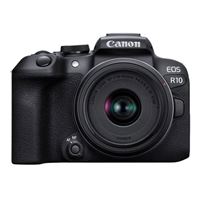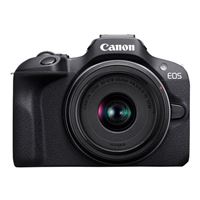Breadcrumbs
- Selected Refinements:
- Digital Cameras & Camcordersx
- Digital SLR Camerasx
Special Offers / Advertisements
Compare up to 4 items
New list of matching products
X
Sorry, you may compare a maximum of 4 items at a time.
Please clear one or more of your compare items before adding another-
Usually ships in 5-7 business days. Limited availability. May not be in stock at time of order. No back orders.Our price $479.99
-
Usually ships in 5-7 business days.Our price $1,099.00
-
Usually ships in 5-7 business days.Our price $749.99
Original price $799.99Save $50.00 -
Usually ships in 5-7 business days. Limited availability. May not be in stock at time of order. No back orders.Our price $799.99
-
Usually ships in 5-7 business days.Our price $499.99
Original price $599.99Save $100.00 -
Usually ships in 5-7 business days.Our price $729.99
Original price $829.99Save $100.00 -
Usually ships in 5-7 business days. Limited availability. May not be in stock at time of order. No back orders.Our price $899.99
Original price $999.99Save $100.00
Special Offers / Advertisements
{
'name': 'EOS Rebel T7 EF-S 18-55mm IS II Kit',
'id': '656151',
'price': '479.99',
'brand': 'Canon',
'category': 'Digital SLR Cameras|169',
'list': 'Search Results',
'position': 1
},{
'name': 'EOS R10 RF-S 18-45mm F4.5-6.3 IS STM Kit Mirrorless Camera',
'id': '660524',
'price': '1,099.00',
'brand': 'Canon',
'category': 'Digital SLR Cameras|169',
'list': 'Search Results',
'position': 2
},{
'name': 'EOS R50 Mirrorless Camera with 18-45mm Lens - Black',
'id': '664064',
'price': '749.99',
'brand': 'Canon',
'category': 'Digital SLR Cameras|169',
'list': 'Search Results',
'position': 3
},{
'name': 'Alpha ZV-E10 - APS-C Interchangeable Lens Mirrorless Vlog Camera',
'id': '661144',
'price': '799.99',
'brand': 'Sony',
'category': 'Digital SLR Cameras|169',
'list': 'Search Results',
'position': 4
},{
'name': 'EOS R100 Mirrorless Camera with 18-45mm Lens',
'id': '668346',
'price': '499.99',
'brand': 'Canon',
'category': 'Digital SLR Cameras|169',
'list': 'Search Results',
'position': 5
},{
'name': 'Canon EOS R100 Mirrorless Camera with 18-45mm and 55-210mm Lenses Kit',
'id': '672190',
'price': '729.99',
'brand': 'Canon',
'category': 'Digital SLR Cameras|169',
'list': 'Search Results',
'position': 6
},{
'name': 'EOS R50 Content Creator Kit Mirrorless Camera',
'id': '672191',
'price': '899.99',
'brand': 'Canon',
'category': 'Digital SLR Cameras|169',
'list': 'Search Results',
'position': 7
}
{'id': 'Tower',
'name': 'Mackie Web Tower',
'creative': 'https://60a99bedadae98078522-a9b6cded92292ef3bace063619038eb1.ssl.cf2.rackcdn.com/webp_mackie_mainstream.webp',
'position': '1' }








